Subterranean Kingdom Of Shahmaran And The Land Of The Snakes
Ellen Lloyd - AncientPages.com - Wisdom is better than ignorance, but perhaps not always. How far should a person go to become a wise man or woman? There are times when we wish we never experienced certain events because the price we paid for gaining wisdom was much too high.

Shahmaran was the Queen of the Serpents. Credit: Adobe Stock - T Studio
The legend of Shahmaran is a beautiful but sad story about a man who gained remarkable wisdom, but not through any good means. Although he spent the rest of his life as a famous and respected wise man, his heart was always filled with sorrow. No matter how much he tried, he could never forget about the wonderful, intelligent creature he had met and lost.
Shahmaran's legend is not only a tale about wisdom, love, greed, and loss but also reveals why the snakes became mortal enemies of humans.
Ancient Beliefs About The Wise Serpents
The serpent has played an important role in the life of our ancestors for thousands of years. Many ancient civilizations say they were guided by the wise Serpent People, who gave them knowledge of architecture, astronomy, medicine, and agriculture and taught Earthlings all they needed to know to establish a civilization. Evidence of ancient serpent worship can be found worldwide. The serpent frequently appears in myths and legends. Artifacts and carvings made in the image of the snake have been found all across the world.
According to ancient beliefs, the serpent is a symbol of immortality, which was demonstrated by the shedding of its skin.
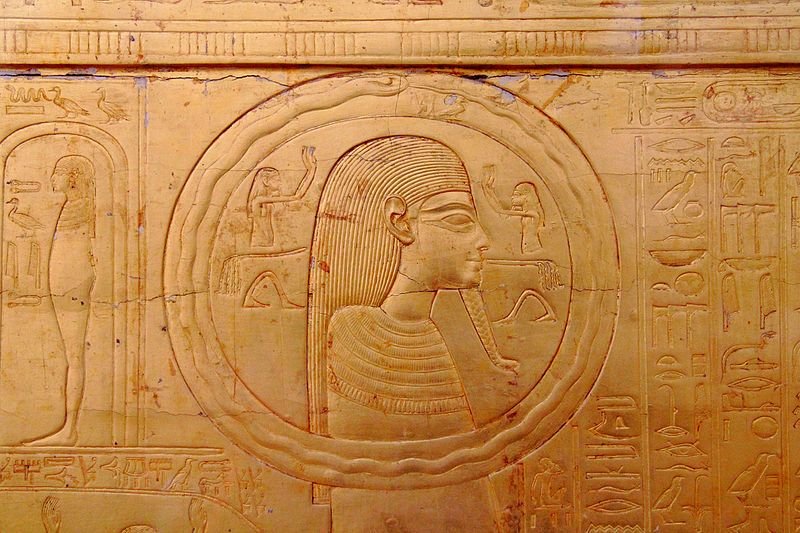
First known representation of the ouroboros on one of the shrines enclosing the sarcophagus of Tutankhamun. Credit: Djehouty - CC BY-SA 4.0
Many ancient cultures believed in the concept of infinity, and the serpent became a symbolic representation of the cycle of life and death that the universe maintains. Ancient texts and carvings show our ancestors frequently used the Ouroboros as an infinity symbol. Beliefs and depictions vary slightly, but in general, the Ouroboros were portrayed as serpents engulfing their tails and forming a circle with the beginning and end.
The Neolithic site Göbekli Tepe in Turkey is famous for its massive T-shaped stone pillars. On these huge megaliths, there are many engravings of animals, and among them, the serpent is one of the most frequently depicted creatures. Legends of various serpent-like beings are common across Anatolia. The Turks, Kurds, Yezidis, and Iranians have kept the memory of the wise serpents of the past alive.
The Underground Kingdom Of Shahmaran And The Serpents
Ancient legends tell Shahmaran was half woman and half snake. Her legend is very old, and there are many variations of the same story. Being half-human and half-snake, Shahmaran reminds me of the wise Nagas encountered in Hindu mythology.
In Turkey, Shahmaran is associated with the Mediterranean town of Tarsus. In the Turkish version of the legend, the young man who met Shahmaran was named Tahmasp (in other versions of the story, he is known as Yada Jamsab or Jamisav). Tahmasp was handsome but poor and worked as a woodcutter.
One day, while being out in the forest cutting trees, he and his friends came across a mysterious well filled with honey. Tahmasp climbed down the well to get more honey, but when it was time to return to the surface, he got stuck. His friends didn’t bother to wait for him and left him in the well. In other versions of the legend, it is said that Tahmasp and his friends found a cave with honey.
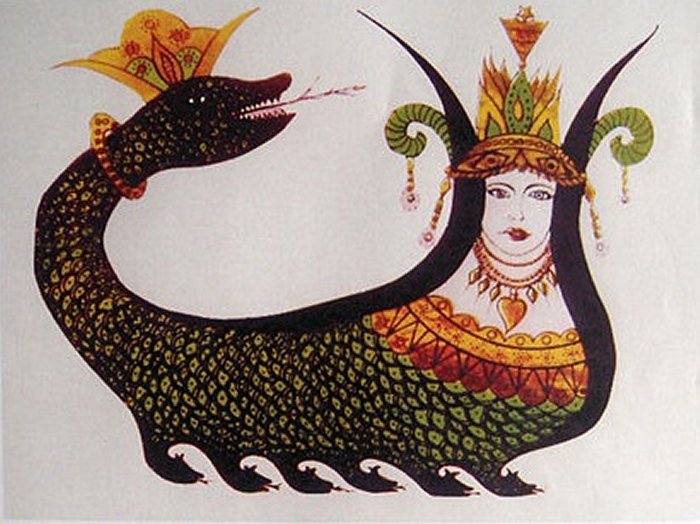
Shahmaran depicted in a Kurdish calendar. Credit: MikaelF - CC BY-SA 2.0
Tahmasp didn’t know what to do. He could not reach the surface, and his friends were gone, so he decided to explore well. Suddenly, he spotted a large hole at the bottom of the well. What was this? Where was the hole leading? Being a brave and curious young man, Tahmasp grabbed a knife and made a hole big enough to squeeze through. He crawled down and reached a deep, dark cavern. At this point, he was now so tired from exhaustion that he fell asleep.
When Tahmasp woke up, he was horrified as he saw thousands of snakes around him. He was convinced they were going to kill him, and he started praying to God. The young man was sitting, shaking, not knowing what to do. He was so frightened that he closed his eyes. However, the snakes didn’t appear hostile. They were simply looking at him.
When Tahmasp suddenly opened his eyes, he saw a beautiful woman who was half human and half snake. Tahmasp was startled and speechless. He had never seen any remarkable creature like this before. The snake woman told him not to be afraid. She explained her name was Shahmaran, and she was the Queen of the Snakes. She also told him that he was now in the land of the snakes, and as their guest, he had nothing to fear. Then, she left, and Tahmasp fell asleep again.
The next morning, Shahmaran returned and showed him the magnificent realm of the serpents. Tahmasp was taken to a large hall and beautiful garden. He ate breakfast and he was captivated by the beauty of this mysterious snake woman. As time passed, Tahmasp became a permanent resident in the underground land of the serpents. He felt safe and appreciated the company of these colorful, intelligent animals. He and Shahmaran fell in love, and though he was now a different man. He was happy, or at least he thought so. After a while, he realized that although he loved Shahmaran, he missed his family.
Shahmaran was reluctant to let him go because she loved him, but she was a wise being and understood he should be in the company of his own kind. She allowed him to return to the world above, but only under one condition. He must never reveal her kingdom's location and the snakes' underground land. She also told him that he must be careful because, after all this time, he had now taken on some characteristics of the snakes. Shahmaran explained he should never bathe with other people because contact with water would reveal he had the skin of a snake.
Horrible Death Of Shahmaran - The Serpent Queen
Tahmasp promised never to reveal her secret and returned to the surface. Many years passed, and everything was fine, until one day, the king of the city became sick. Doctors said the ruler could only be cured if he ate the flesh of Shahmaran. Somehow, the king had learned there was someone in the city who knew where to find Shahmaran and the land of the snake, but he had no clue who it was. The king ordered water to be poured on all inhabitants. This would reveal who had the skin of a snake.
Tahmasp understood water would expose him and tried to hide, but it was too late. Soldiers ordered everyone to go to public baths, and as he tried to flee, the king’s man captured him and took him to the town baths.

Statue of Shahmaran in Tarsus. Credit: CeeGee - CC BY-SA 4.0
There was nothing he could do, and when soldiers poured water on him, his skin took on the appearance of a snake. Tahmasp was taken to the king, where he, under torture, revealed Shahmaran’s secret.
As soon as soldiers learned where to find the land of the snakes, he hurried, grabbed Shahmaran, and took her to the king’s palace.
Needless to say, Tahmasp felt awful when he saw the beautiful snake woman who was now captured because he couldn’t keep his promise. Shahmaran, who knew she was going to die, said: “As I am about to die, I will give you my secret. Whoever eats my tail will attain wisdom beyond measure and long life but whoever eats my head will die.”
The guards killed Shahamran and cut her into three pieces. The Captain of the Guard and the King wished to become wise, and the King wanted to live long, so they ate her tail. Tahmasp wanted to die, so he consumed part of her head.
What they didn’t know was that Shahmaran had tricked them shortly before being killed. The King and the Captain of the Guard died, but Tahmasp survived. The truth was that the wisdom of Shahmaran filled her head and now was part of Tahmasp.
Tahmasp became a wise man, but he was lonely and sad. He couldn’t bear the sorrow of losing Shahmaran. He left his home, wandered from land to land, from mountain to mountain, and became known far and wide as a wise man.
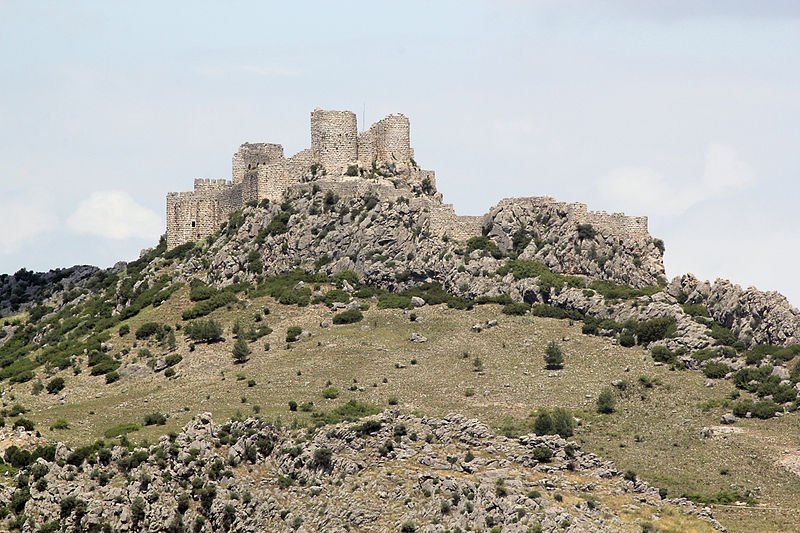
Some say Yilankale, the Snake Castle was once home to Shahmaran. Credit: Klaus-Peter Simon - CC BY-SA 3.0
The legend of Shahmaran explains why the snakes became enemies of humans and why they could never forget and forgive the brutal killing of their Serpent Queen.
See also: More Myths And Legends
If you travel to Turkey, you can find that Shahmaran is still depicted in embroidery, fabrics, and jewelry. The story and imagery of Shahmaran are considered a national treasure in Turkey.
In Adana in southern Turkey, the Yilankale (Snake Castle) is locally known as the home of Shahmaran. Shahmaran’s story is still popular today. Descriptions of her underground kingdom and the land of the snakes have been the subject of many books, including Arabian Nights Tales.
Updated on February 1, 2024
Written by Ellen Lloyd – AncientPages.com
Copyright © AncientPages.com All rights reserved. This material may not be published, broadcast, rewritten or redistributed in whole or part without the express written permission of AncientPages.com
More From Ancient Pages
-
 Unique Maya Center Of Copán With History Recorded In 2500 Hieroglyphics
Civilizations | Nov 7, 2018
Unique Maya Center Of Copán With History Recorded In 2500 Hieroglyphics
Civilizations | Nov 7, 2018 -
 Controversial Prehistoric Bronze Gears Of Peru
Artifacts | Aug 15, 2015
Controversial Prehistoric Bronze Gears Of Peru
Artifacts | Aug 15, 2015 -
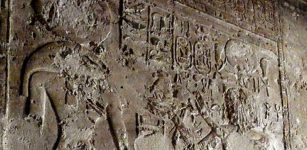 Pakhet ‘Night Huntress’: Egyptian War-Like Lioness Goddess Associated With Artemis
Egyptian Mythology | Mar 4, 2019
Pakhet ‘Night Huntress’: Egyptian War-Like Lioness Goddess Associated With Artemis
Egyptian Mythology | Mar 4, 2019 -
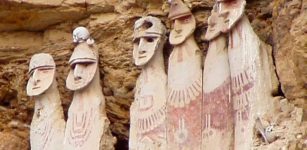 Genetic Evidence Reveals: Chachapoyas “Cloud People” Resistant To Inca Rule
Archaeology | Dec 14, 2017
Genetic Evidence Reveals: Chachapoyas “Cloud People” Resistant To Inca Rule
Archaeology | Dec 14, 2017 -
 Mysterious Water Source Belonging To The Goddess Of The Cold Kingdom Of Evil Remains An Archaeological Puzzle
Featured Stories | Dec 6, 2019
Mysterious Water Source Belonging To The Goddess Of The Cold Kingdom Of Evil Remains An Archaeological Puzzle
Featured Stories | Dec 6, 2019 -
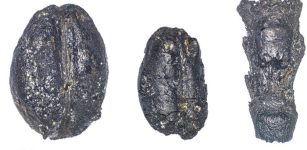 7,000-Year-Old Grains Hints At Origin Of Swiss Pile Dwellings
Archaeology | Mar 3, 2022
7,000-Year-Old Grains Hints At Origin Of Swiss Pile Dwellings
Archaeology | Mar 3, 2022 -
 Tomb Of Christopher Columbus Finally Found But There Is One Problem With His Body
Archaeology | Apr 9, 2022
Tomb Of Christopher Columbus Finally Found But There Is One Problem With His Body
Archaeology | Apr 9, 2022 -
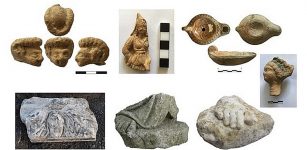 Excavations Of Ancient Theater In 2,400-Year-Old City Of Smyrna, Turkey
Archaeology | Feb 13, 2019
Excavations Of Ancient Theater In 2,400-Year-Old City Of Smyrna, Turkey
Archaeology | Feb 13, 2019 -
 Beads Show European Trade In African Interior Used Indigenous Routes
Archaeology | Sep 17, 2022
Beads Show European Trade In African Interior Used Indigenous Routes
Archaeology | Sep 17, 2022 -
 Cerberus – Giant Multi-Headed Dog Guards The Underworld Of God Hades In Greek Mythology
Featured Stories | Jun 2, 2020
Cerberus – Giant Multi-Headed Dog Guards The Underworld Of God Hades In Greek Mythology
Featured Stories | Jun 2, 2020 -
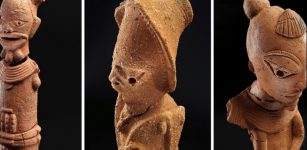 Honey-Collecting In Prehistoric West Africa From 3500 Years Ago – Pottery Examined
Archaeology | Apr 14, 2021
Honey-Collecting In Prehistoric West Africa From 3500 Years Ago – Pottery Examined
Archaeology | Apr 14, 2021 -
 Ancient DNA Reveals Easter Island’s Population Collapse Never Occurred
DNA | Sep 16, 2024
Ancient DNA Reveals Easter Island’s Population Collapse Never Occurred
DNA | Sep 16, 2024 -
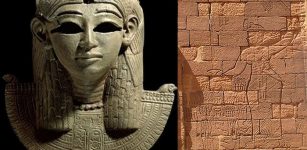 Amanirenas – Fearless Queen Of Kush Who Defeated Ancient Romans
Featured Stories | Jan 30, 2019
Amanirenas – Fearless Queen Of Kush Who Defeated Ancient Romans
Featured Stories | Jan 30, 2019 -
 The Apaches’ Mysterious Encounter With Unknown Beings
Featured Stories | Jun 10, 2024
The Apaches’ Mysterious Encounter With Unknown Beings
Featured Stories | Jun 10, 2024 -
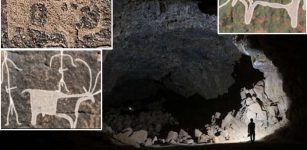 Human Occupation In Lava Tube Cave In Saudi Arabia – First Evidence Discovered
Archaeology | Apr 18, 2024
Human Occupation In Lava Tube Cave In Saudi Arabia – First Evidence Discovered
Archaeology | Apr 18, 2024 -
 Huge, Stunning 2,000-Year-Old Marble Statues Restored In Ashkelon, Israel
Archaeology | Sep 17, 2024
Huge, Stunning 2,000-Year-Old Marble Statues Restored In Ashkelon, Israel
Archaeology | Sep 17, 2024 -
 Beethoven’s Genome Offers Clues To Composer’s Health And Family History
DNA | Mar 27, 2023
Beethoven’s Genome Offers Clues To Composer’s Health And Family History
DNA | Mar 27, 2023 -
 On This Day In History: The U.K.’s First Murder Case Solved By A Fingerprint – On March 27, 1905
News | Mar 27, 2017
On This Day In History: The U.K.’s First Murder Case Solved By A Fingerprint – On March 27, 1905
News | Mar 27, 2017 -
 Scientists Explore How Neanderthals Caught Birds In Caves For Food
Archaeology | Sep 16, 2021
Scientists Explore How Neanderthals Caught Birds In Caves For Food
Archaeology | Sep 16, 2021 -
 Buried Ancient Roman Glass Has Formed Photonic Crystals – Extraordinary Discovery – Scientists Say
Ancient Technology | Sep 25, 2023
Buried Ancient Roman Glass Has Formed Photonic Crystals – Extraordinary Discovery – Scientists Say
Ancient Technology | Sep 25, 2023
